Advanced Fabrication of 56 Gbaud Electro-Absorption Modulated Laser (EML) Chips Integrated with High-Speed Silicon Photonic Substrates
Abstract
1. Introduction
2. Materials and Methods
2.1. EML Laser Chip Design and Fabrication
2.2. Design and Process Implementation of High-Speed Si-Based Integrated Substrates
2.3. COC Packaging Technology
3. Results
3.1. Performance Testing of the EML Chip
3.2. COC Packaging Stability Test
4. Discussion
5. Conclusions
Author Contributions
Funding
Institutional Review Board Statement
Informed Consent Statement
Data Availability Statement
Conflicts of Interest
References
- Tausanovitch, N. Analysis of Hardware Technologies Required for Artificial Intelligence (AI). Integr. Circuit Appl. 2018, 35, 3. [Google Scholar] [CrossRef]
- Hunt, E.B. Artificial Intelligence; Academic Press: New York, NY, USA, 2014. [Google Scholar]
- Fetzer, J.H. What Is Artificial Intelligence? Artificial Intelligence: Its Scope and Limits; Springer Netherlands: Dordrecht, The Netherlands, 1990; pp. 3–27. [Google Scholar]
- Wei, L.P. Development trends and prospects of optical communication technology. Telecommun. Sci. 2003, 19, 5. [Google Scholar] [CrossRef]
- Nakazawa, M.; Kikuchi, K.; Miyazaki, T. High Spectral Density Optical Communication Technologies; Springer Science & Business Media: Berlin/Heidelberg, Germany, 2010. [Google Scholar]
- Wang, H.T.; Zhang, P.H.; Su, Z. 800 Gbit/s optical module technology and applications. ZTE Commun. 2021, 27, 40–46. [Google Scholar]
- Wu, B.; Zhao, W.; Zhang, H. Progress of 800 Gb/s optical module and optoelectronic chips technology. In Proceedings of the Optoelectronic Devices and Integration XI. SPIE, Online, 5–11 December 2022; Volume 12314, pp. 65–68. [Google Scholar]
- Xiang, P.; Song, X.; Zheng, Y.; Ye, Y.; Liu, C.G.; Mu, L. Research and design of 800 Gbit/s PAM4 LR8 10 km optical module. In Proceedings of the 2022 7th International Conference on Communication, Image and Signal Processing (CCISP), Chengdu, China, 18–20 November 2022; pp. 18–22. [Google Scholar]
- Nishimura, K.; Asakura, H.; Yamauchi, S.; Suzuki, T.; Nakai, Y.; Yamaguchi, Y.; Kageyama, T.; Mitaki, M.; Endo, Y.; Naoe, K. 225-Gb/s PAM4 Operation Using Lumped-Electrode-Type EA-DFB Laser for 5 and 10-km Transmission with Low TDECQ. In Proceedings of the Optical Fiber Communication Conference, San Diego, CA, USA, 16–21 February 1997. [Google Scholar]
- Zhu, Y.X.; Zhang, X.; Li, Y.; Li, J.; Lin, X.; Tang, X.; Luo, Y.; Lu, H.; Gai, S. Analysis of the development trends in the global optical chip field. World Sci. Technol. Res. Dev. 2024, 46, 705–719. [Google Scholar]
- Sun, C.Z.; Yang, S.H.; Xiong, B.; Wang, J.; Luo, Y. Research progress on high-speed electro-absorption modulated lasers. Chin. J. Lasers 2020, 47, 701002-1. [Google Scholar]
- Song, J.J.; Zhang, Q.; Li, L. Study on junction alignment process of electro-absorption modulated laser (EML). Integr. Circuit Appl. 2023, 40, 8–10. [Google Scholar]
- Uchiyama, A.; Okuda, S.; Tsuji, T.; Hokama, Y.; Shirao, M.; Abe, K.; Yamatoya, T.; Yamauchi, Y. Demonstration of 155 Gbaud PAM4 and PAM6 EML with Narrow High-Mesa EA Modulator for 400 Gbps per Lane Transmission. In Proceedings of the Optical Fiber Communication Conference, San Diego, CA, USA, 24–28 March 2024; p. Tu2D-1. [Google Scholar]
- Huang, J.J.-S.; Chang, H.S.; Hsu, Y.-C.; Chiu, A.; Fang, Z.; Yu, C.-Y.; Hsiang, S. 212Gbps high-power EML for 800G artificial intelligence optical transmissions. Comp. Opt. Photonics 2024, 1, 001–005. [Google Scholar] [CrossRef]
- Bhasker, P.; Arora, S.; Robertson, A.; Ni, A.; McCaully, T.; Bloch, J.; Johnson, J.E. 75 GHz BW Ultra-High Speed O-band Hybrid CMBH Ridge EMLs for Next Generation Ethernet. In Proceedings of the ECOC 2024, 50th European Conference on Optical Communication, Frankfurt, Germany, 22–26 September 2024; pp. 596–598. [Google Scholar]
- Yun, S.J.; Han, Y.T.; Kim, S.T.; Shin, J.U.; Park, S.H.; Lee, D.H.; Lee, S.Y.; Baek, Y. Optical subassembly modules using light sources butt-coupled with silica-based PLC. IEEE Photonics Technol. Lett. 2019, 32, 132–135. [Google Scholar]
- Kobayashi, W.; Arai, M.; Yamanaka, T.; Fujiwara, N.; Fujisawa, T.; Tadokoro, T.; Tsuzuki, K.; Kondo, Y.; Kano, F. Design and fabrication of 10-/40-Gb/s, uncooled electroabsorption modulator integrated DFB laser with butt-joint structure. J. Light. Technol. 2009, 28, 164–171. [Google Scholar]
- Sun, Y.X.; Yang, Z.Q.; Jia, H.Y.; Yu, J.; Li, D. Optimization design of a novel electro-absorption modulated laser. Study Opt. Commun. 2023, 49, 69–78. [Google Scholar]
- Liu, G.L.; Wang, X.; Xu, G.Y.; Chen, W.; Zhang, B.; Zhou, F.; Zhang, J.; Wang, X.; Zhu, H. Selective area epitaxy fabrication of monolithic integrated single ridge electro-absorption modulated DFB laser. Chin. J. Lasers 2001, 28, 321–324. [Google Scholar]
- Han, W. Design of Material Structure and Epitaxial Growth for 1.55 μm High-Speed Lasers. Master’s Thesis, Hebei University of Technology, Tianjin, China, 2006. [Google Scholar]
- Brook, J.; Dandliker, R. Submicrometer holographic photolithography. Solid State Technol. 1989, 32, 91–95. [Google Scholar]
- Pease, R.F.W. Electron beam lithography. Contemp. Phys. 1981, 22, 265–290. [Google Scholar] [CrossRef]
- Lan, H.; Ding, Y. Nanoimprint Lithography; InTech: Rijeka, Croatia, 2010. [Google Scholar]
- Meng, X.F.; Zhu, H. Research progress on AlN substrate materials. Ceram. Res. Vocat. Educ. 2003, 1, 41–45. [Google Scholar]
- Lederer, D.; Raskin, J.P. Substrate loss mechanisms for microstrip and CPW transmission lines on lossy silicon wafers. Solid-State Electron. 2003, 47, 1927–1936. [Google Scholar]
- Kim, J.; Jung, B.; Cheung, P.; Harjani, R. Novel CMOS low-loss transmission line structure. In Proceedings of the 2004 IEEE Radio and Wireless Conference (IEEE Cat. No. 04TH8746), Atlanta, GA, USA, 22 September 2004; pp. 235–238. [Google Scholar]
- Yun, H.G.; Choi, K.S.; Kwon, Y.H.; Choe, J.S.; Moon, J.T. Fabrication and characteristics of 40-Gb/s traveling-wave electroabsorption modulator-integrated DFB laser modules. IEEE Trans. Adv. Packag. 2008, 31, 351–356. [Google Scholar]
- Shirao, M.; Ohata, N.; Yasui, N.; Uto, K.; Fukao, T.; Hatta, T.; Aruga, H.; Mizuochi, T. A 1.55 μm 40 Gbps EML TOSA Employing a Novel FPC Connection. J. Light. Technol. 2014, 32, 3344–3350. [Google Scholar]
- Xu, C.; Xu, Y.Z.; Zhao, Y.; Lu, K.; Liu, W.; Fan, S.; Zou, H.; Liu, W. High-Frequency Modeling and Optimization of E/O Response and Reflection Characteristics of 40 Gb/s EML Module for Optical Transmitters. ETRI J. 2012, 34, 361–368. [Google Scholar]

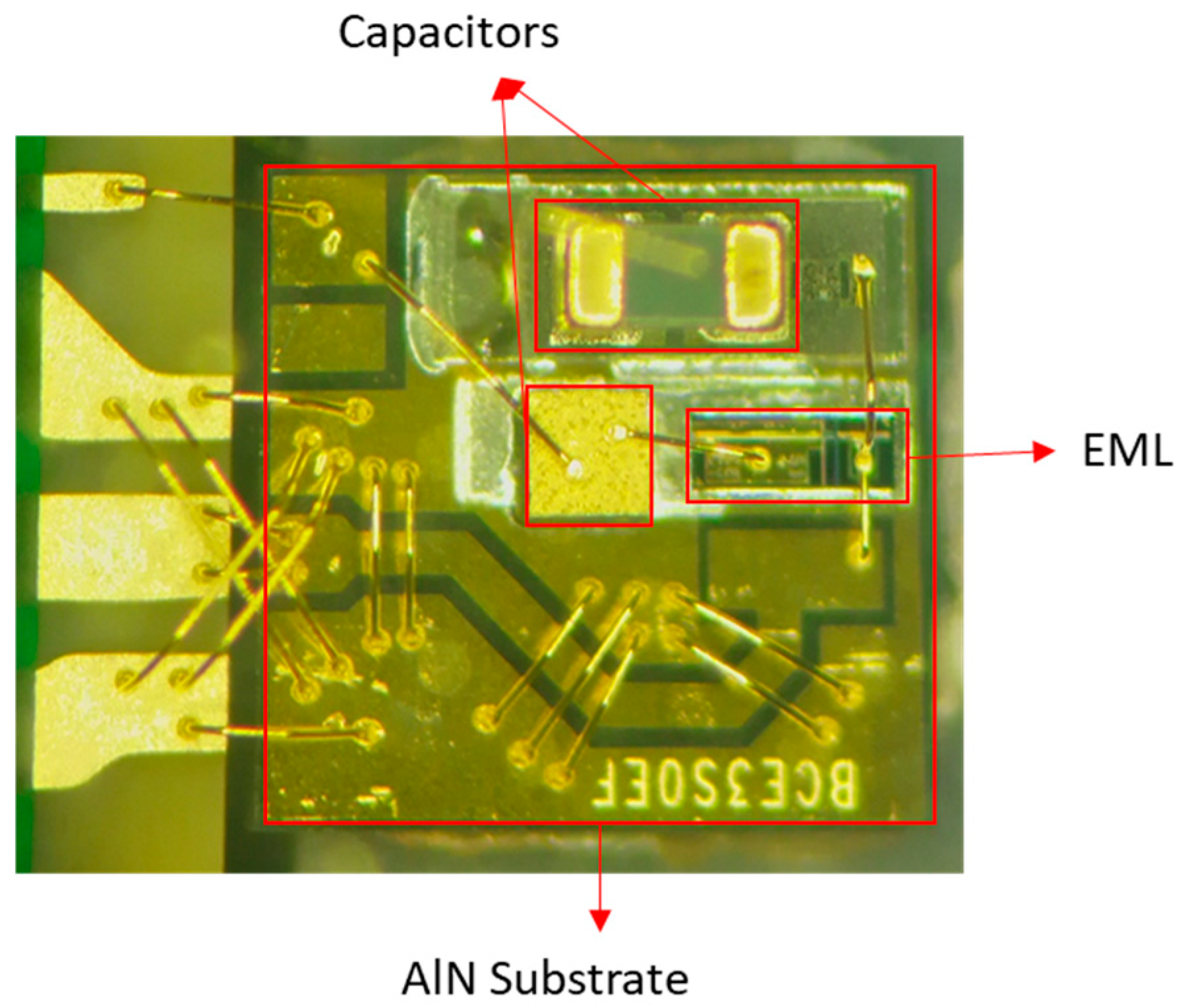
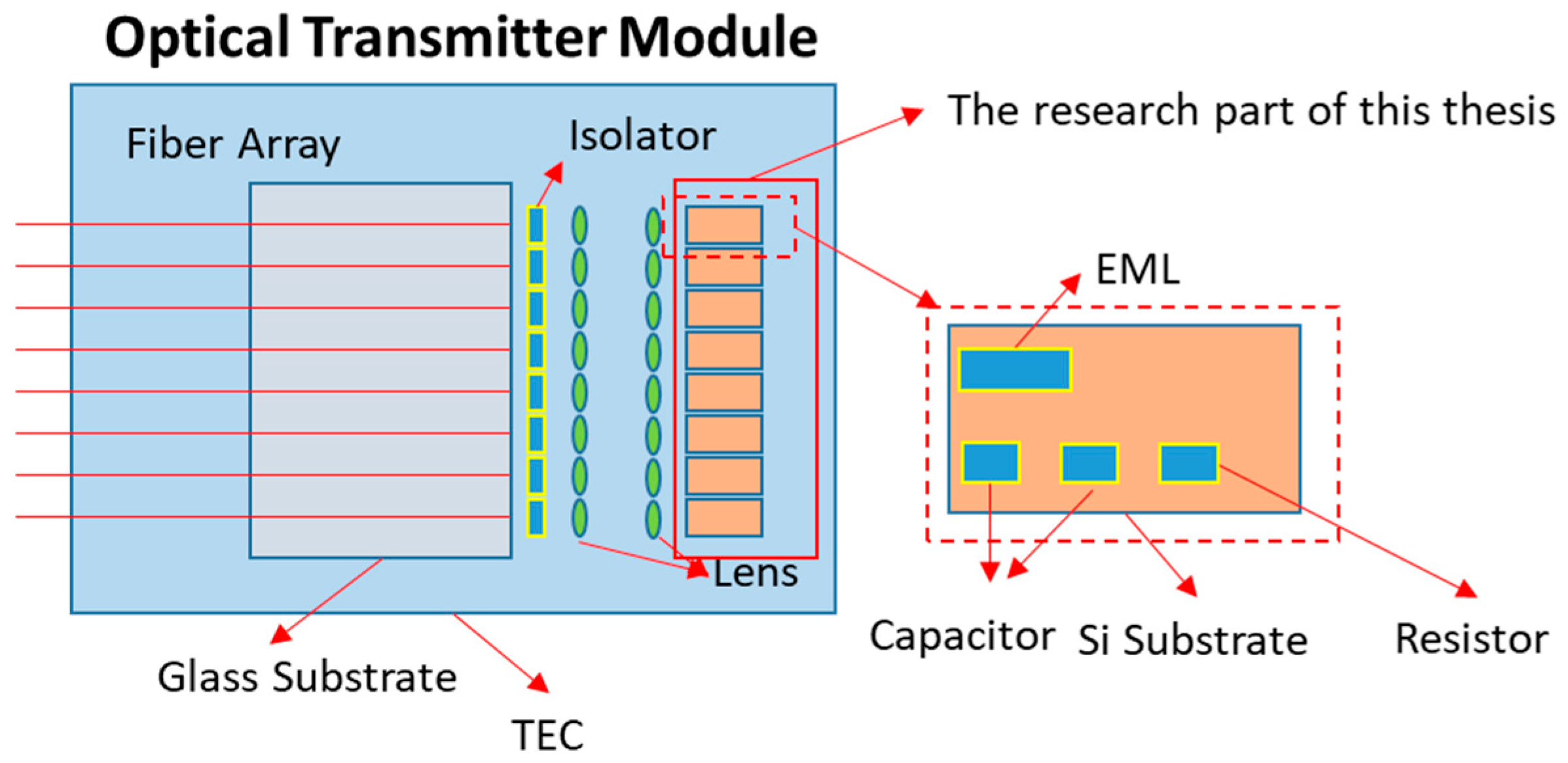
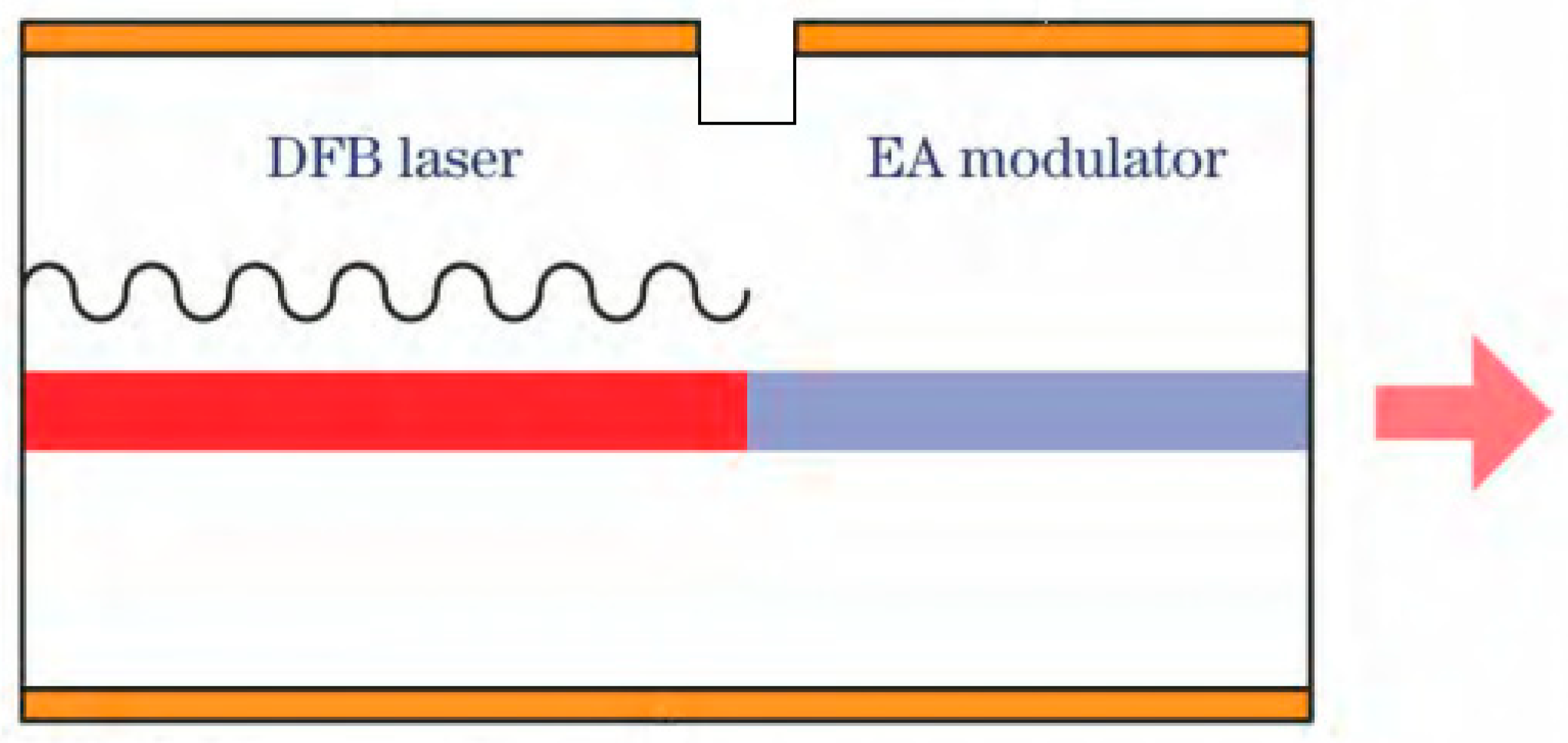
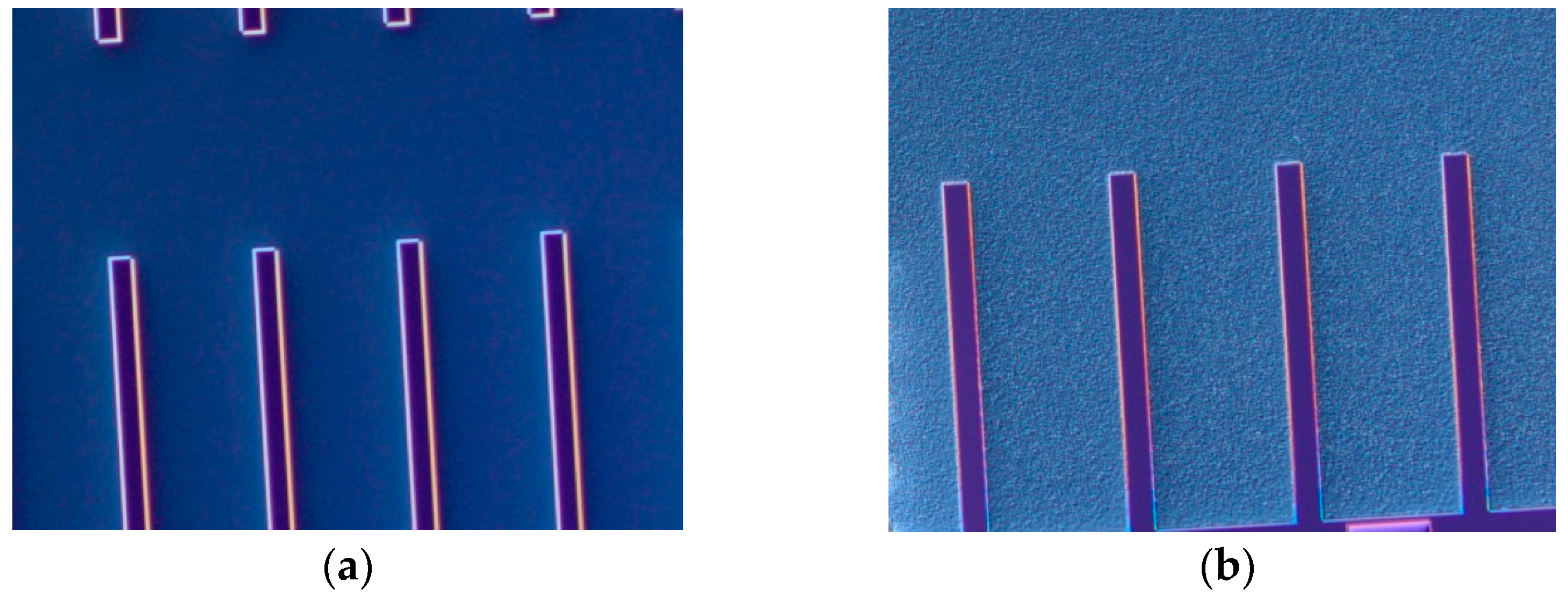

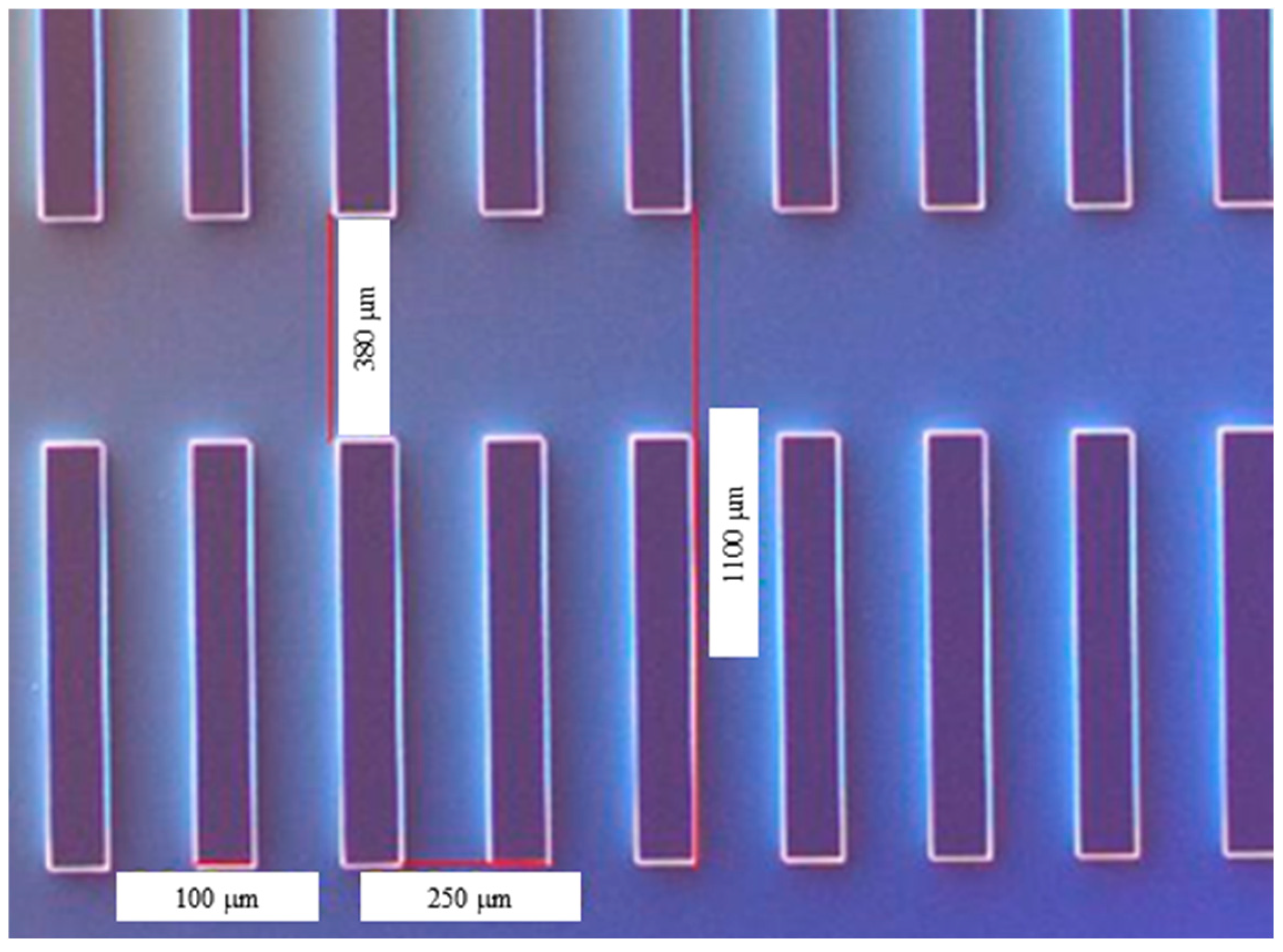

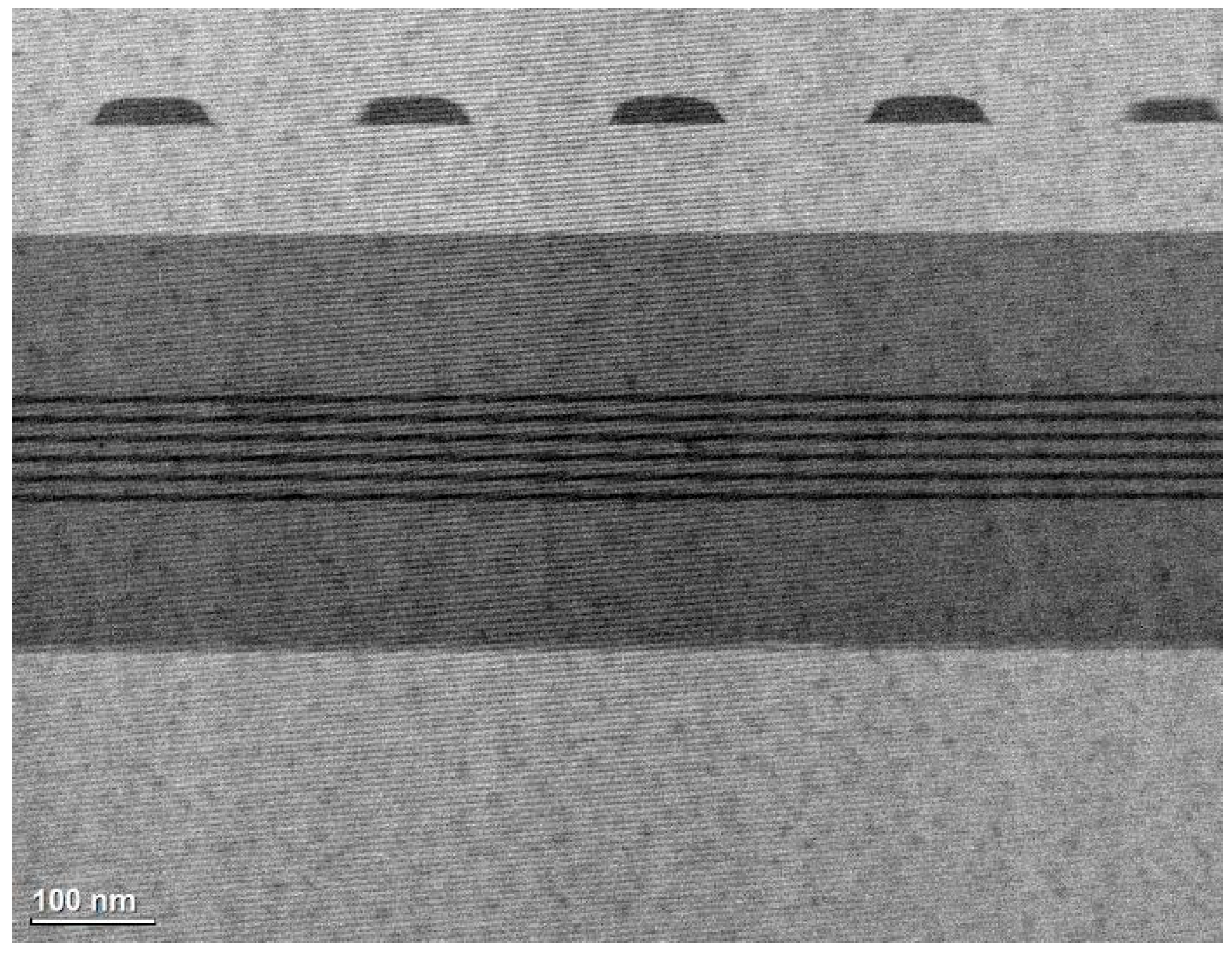

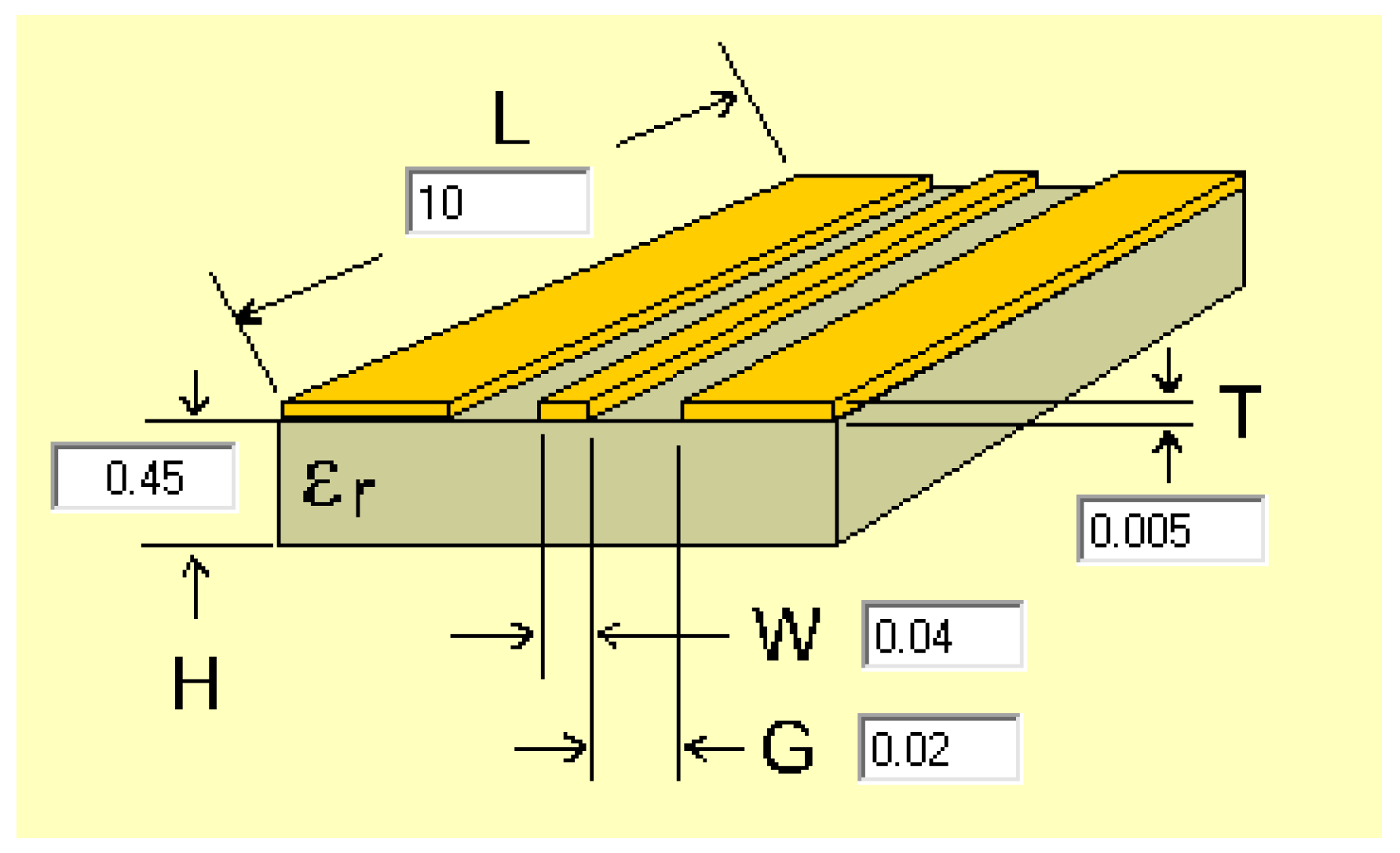


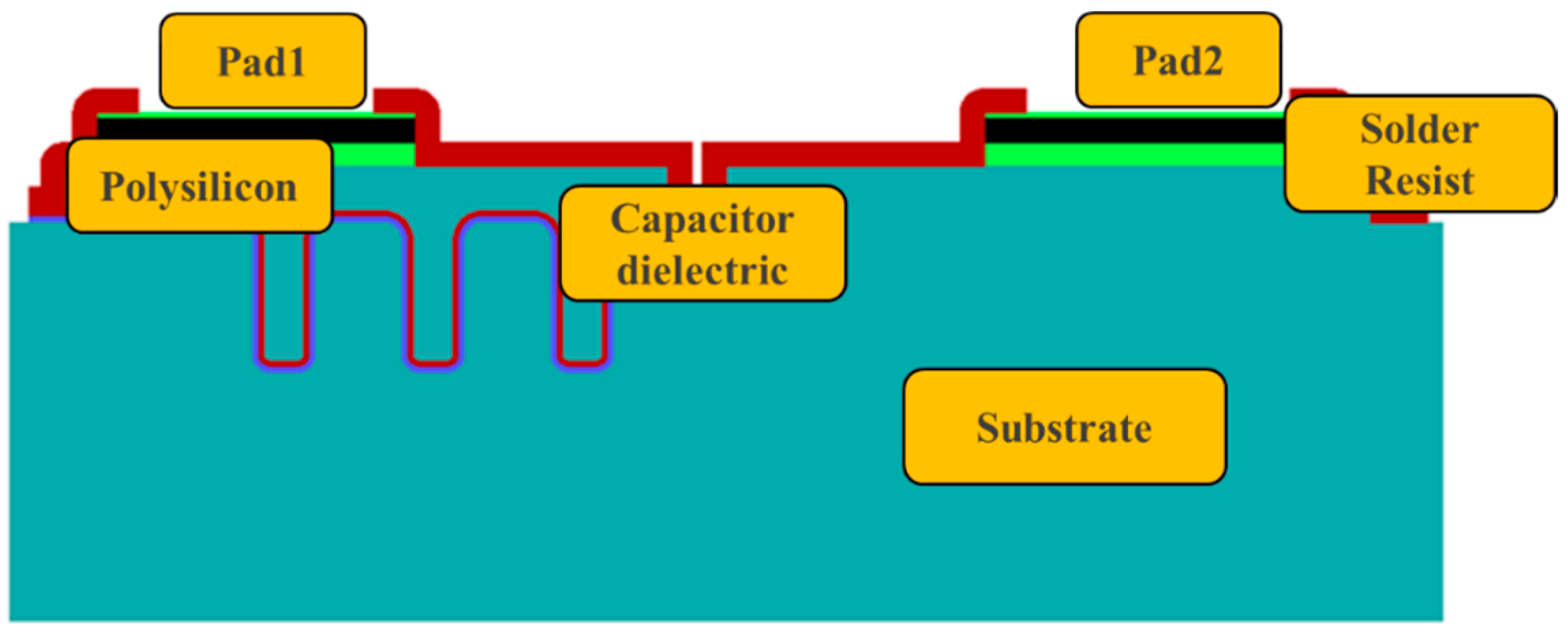



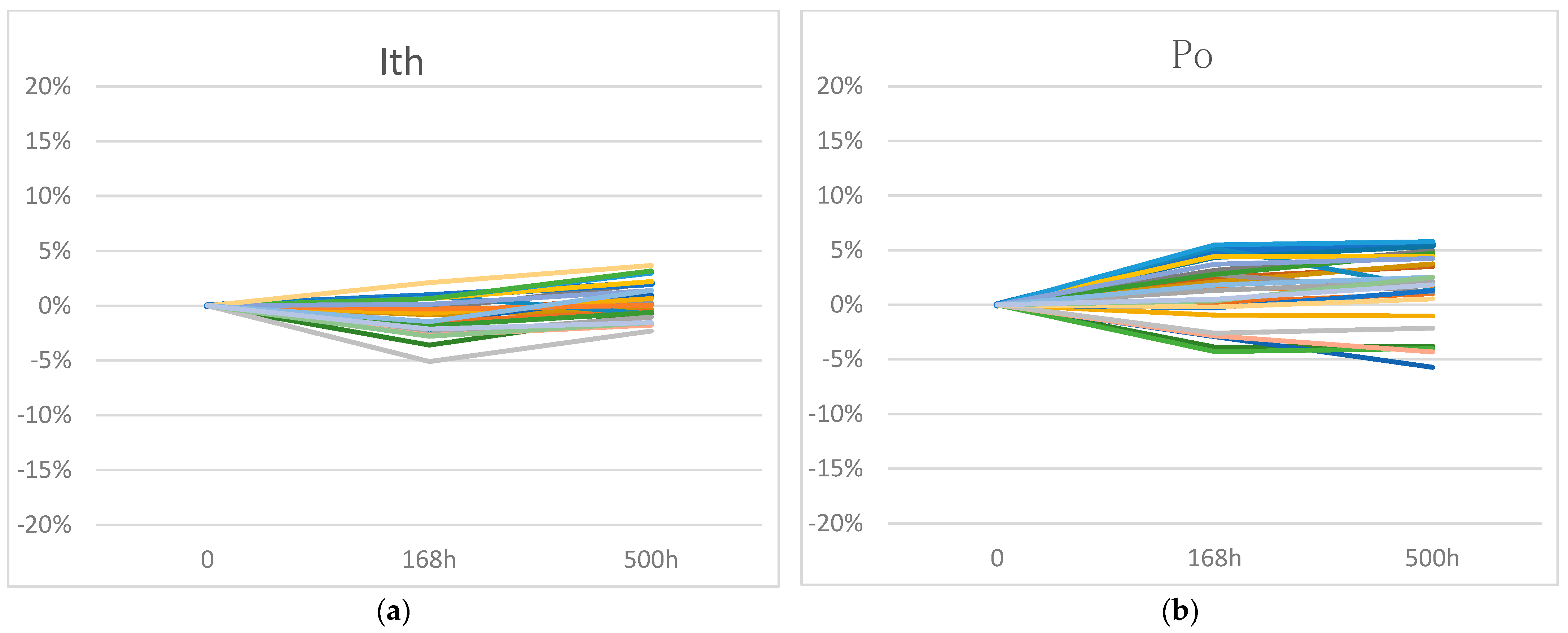



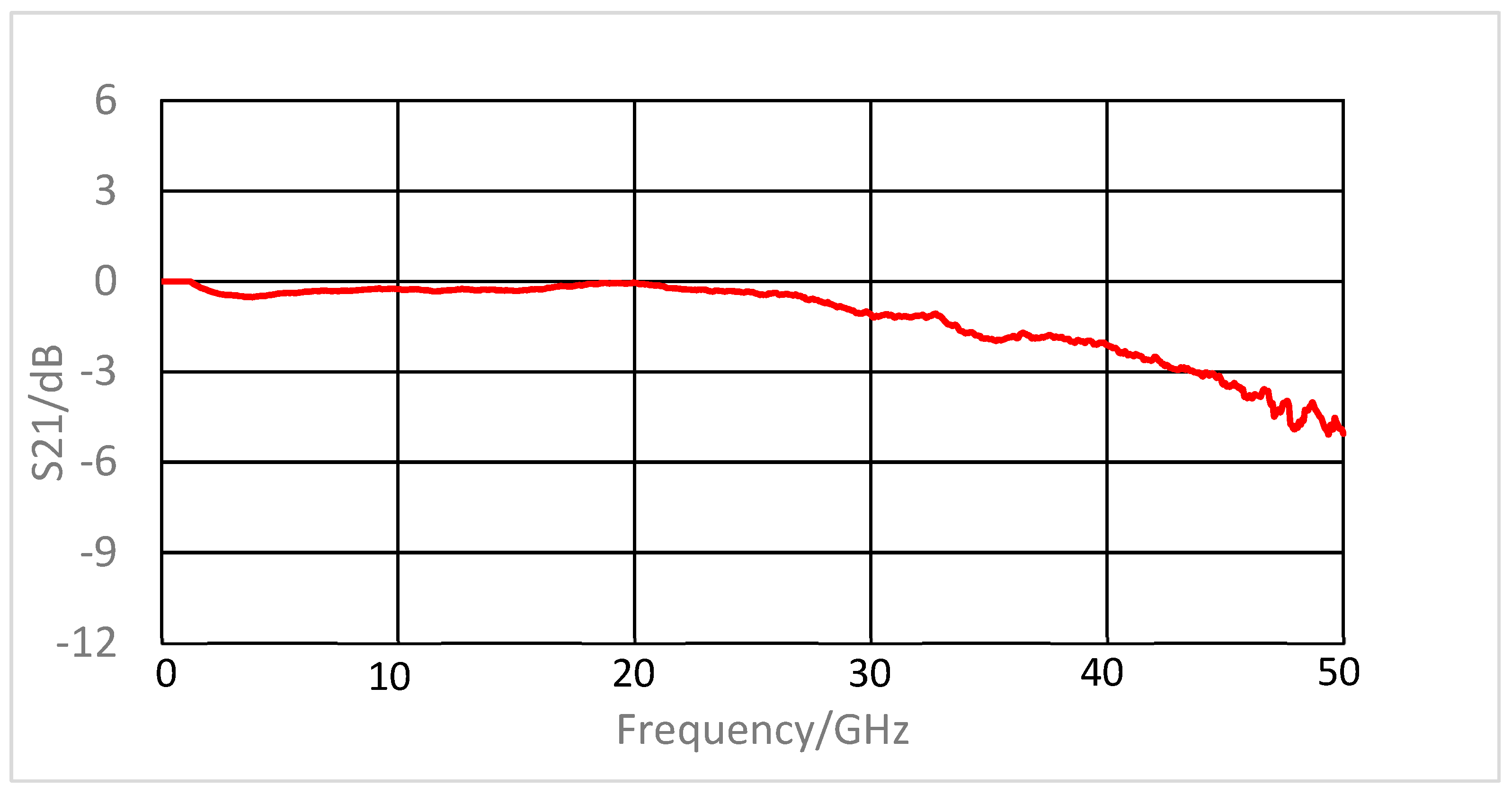
Disclaimer/Publisher’s Note: The statements, opinions and data contained in all publications are solely those of the individual author(s) and contributor(s) and not of MDPI and/or the editor(s). MDPI and/or the editor(s) disclaim responsibility for any injury to people or property resulting from any ideas, methods, instructions or products referred to in the content. |
© 2025 by the authors. Licensee MDPI, Basel, Switzerland. This article is an open access article distributed under the terms and conditions of the Creative Commons Attribution (CC BY) license (https://creativecommons.org/licenses/by/4.0/).
Share and Cite
Li, L.; Xiao, Y.; Wang, W.; Guan, C.; Yao, W.; Zhang, Y.; Chen, X.; Wan, Q.; Dong, C.; Xu, X. Advanced Fabrication of 56 Gbaud Electro-Absorption Modulated Laser (EML) Chips Integrated with High-Speed Silicon Photonic Substrates. Photonics 2025, 12, 329. https://doi.org/10.3390/photonics12040329
Li L, Xiao Y, Wang W, Guan C, Yao W, Zhang Y, Chen X, Wan Q, Dong C, Xu X. Advanced Fabrication of 56 Gbaud Electro-Absorption Modulated Laser (EML) Chips Integrated with High-Speed Silicon Photonic Substrates. Photonics. 2025; 12(4):329. https://doi.org/10.3390/photonics12040329
Chicago/Turabian StyleLi, Liang, Yifan Xiao, Weiqi Wang, Chenggang Guan, Wengang Yao, Yuming Zhang, Xuan Chen, Qiang Wan, Chaoqiang Dong, and Xinyuan Xu. 2025. "Advanced Fabrication of 56 Gbaud Electro-Absorption Modulated Laser (EML) Chips Integrated with High-Speed Silicon Photonic Substrates" Photonics 12, no. 4: 329. https://doi.org/10.3390/photonics12040329
APA StyleLi, L., Xiao, Y., Wang, W., Guan, C., Yao, W., Zhang, Y., Chen, X., Wan, Q., Dong, C., & Xu, X. (2025). Advanced Fabrication of 56 Gbaud Electro-Absorption Modulated Laser (EML) Chips Integrated with High-Speed Silicon Photonic Substrates. Photonics, 12(4), 329. https://doi.org/10.3390/photonics12040329



